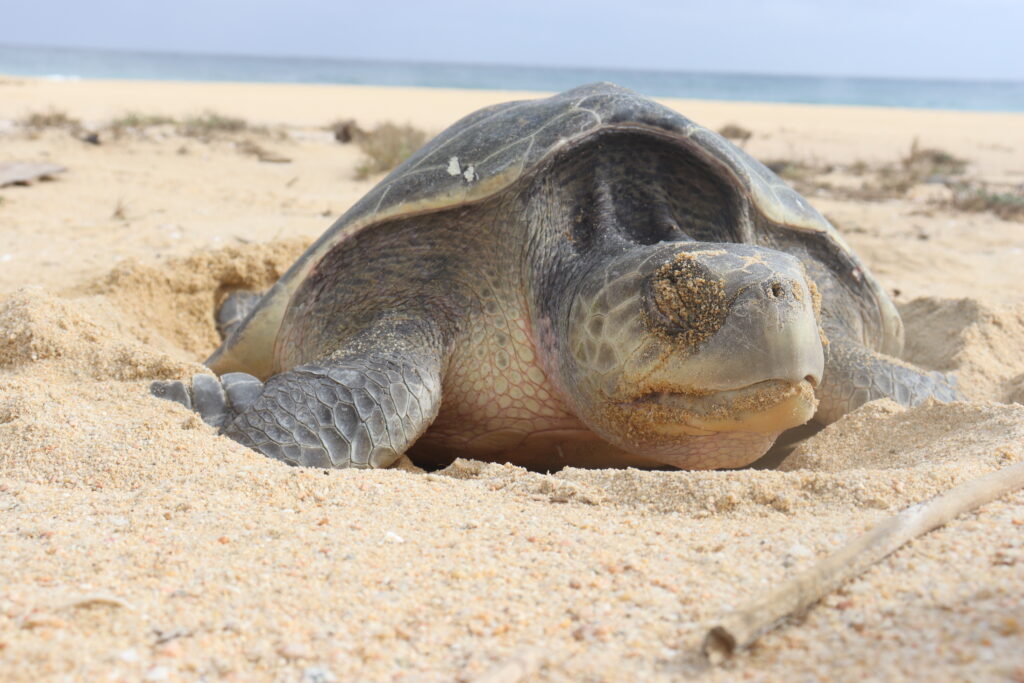World Turtle Day Highlights Pueblo Bonito’s Active Conservation Efforts
World Turtle Day is May 23. Time to “Shellabrate!”
American Tortoise Rescue (ATR), a nonprofit organization, was established in 1990 to protect all species of turtles and tortoises. ATR created and launched WorldTurtleDay.org to increase respect for and knowledge about one of the world’s oldest creatures. Turtle lovers around the globe throw parties, organize fundraisers, and take “shellfies” on May 23 to share on social media.
While turtles have survived for more 200 million years–they outlived the dinosaurs–about 61% of turtles worldwide are threatened or already extinct. According to experts, turtles are the most threatened of the major groups of vertebrates, more so than birds, mammals and fish.
We spoke with Carlos Villalobos, Manager of the Sea Turtle Protection Program at Pueblo Bonito Resorts and Quivira Los Cabos, for his perspective on the fate of these magnificent animals and how protecting them means protecting our own future.
Q: Pueblo Bonito Resorts has taken part in a turtle protection and hatchling release program for nearly two decades. What changes in the ecosystem have you observed over the years? Has the survival rate of these endangered reptiles improved?
A: We have observed that the presence of fish, birds and beach crabs, among other species, has increased, which indicates that the presence of turtles has undoubtedly contributed to their balance. The shoreline vegetation looks healthy and seabird nesting has increased. In the first eight years, dating from the start of the turtle protection program, an average of 80 to 300 nests per season were protected. Subsequently, nesting increased year after year, so much so that currently more than 2,000 nests have been protected in the last four seasons. This tells us that the program has been a success and has been contributing to the recovery of these endangered reptiles.
Q. How many different species of turtles seek the sanctuary of Los Cabos beaches to lay their eggs? What times of year do they come ashore? Also, which turtle species are most at risk of extinction?
A. Three species of sea turtles nest in the Los Cabos area: the olive ridley turtle (Lepidochelys olivacea), the leatherback turtle (Dermochelys coriacea), and the brown or black turtle (Chelonia m. agassizii). The olive ridley turtle nests from June to December; however, it continues to nest throughout the year in smaller numbers. The leatherback turtle spawning season is from November to March; the brown turtle nests sporadically from August to January. The leatherback turtle is the largest sea turtle in the world, measuring up to two meters long and weighing up to 1,000 kilos, but it is also the most threatened. It is in a critical state of extinction at present. Some specialists believe the current population is not enough to give the species continuity of life. In Mexico, it is subject to special protection by federal environmental laws.
Q. Explain in detail how sea turtles support two vital ecosystems: beaches and marine systems.
A. Sea turtles play a very important role within coastal and marine ecosystems. In fact, the presence of turtles is an indicator of the health of these ecosystems. For example, turtles are natural predators of jellyfish and keep their population at bay. Without them, jellyfish would infest the oceans and cause the extinction of other species. The hatchlings of sea turtles are eaten by many species of fish and seabirds that are part of these ecosystems. Without the turtles, an imbalance would occur that could lead to their collapse.
Sea turtles are also part of the ecosystem that develops on the beach and in the dunes. Turtles use beaches and the lower dunes to nest and lay their eggs. Dune plants absorb nutrients from turtle eggs to grow and fix their roots. Without the turtles, coastal vegetation would lose a major source of vital nutrients. Native grasses and plants would not be healthy or strong enough to anchor the dunes, which serve as a natural retaining wall to protect the coast from the onslaught of high waves. The fragile balance of the ecosystem would be seriously affected. In time, the beaches would erode and wash away. The negative impact to tourism would be incalculable.
Q. Guests and residents of Pueblo Bonito Resorts can actively participate in conservation efforts by safely releasing turtle hatchlings into the sea.
A. Releasing the small turtles into the immensity of the ocean is a sign of gratitude to nature for all the generosity it offers us. Seeing the little turtles go to sea gives us emotional and spiritual well-being. That is why sharing this experience with others is essential for us.
Respecting the security protocols implemented in the program, guests and residents can participate in the release of hatchlings and can also visit the turtle camp. The best way to join in is to contact the Concierge, who can provide the necessary information. The turtle release schedule is from August to December. You can also contribute to turtle protection with simple actions, such as not throwing litter on the beach and keeping the beach free of obstacles that prevent nesting or harm the turtles.
